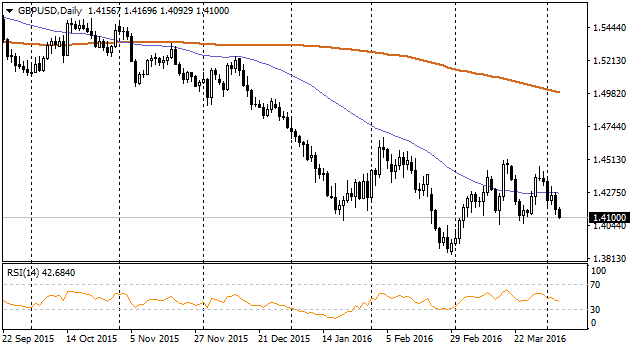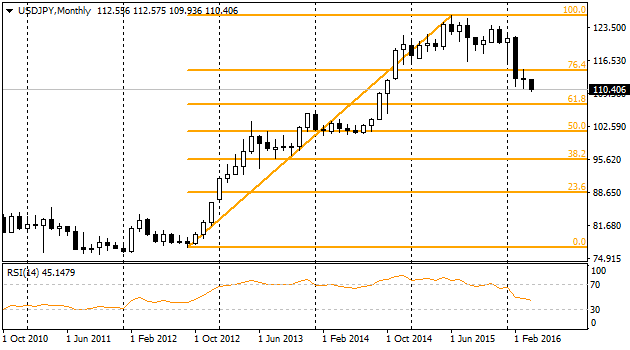
EURUSD
The pair is slowly sliding down, recovering the previous growth and formatting the expectations for the further more serious turn. The possibility of such scenario will rise when (and if) EURUSD breaks the support line of the climbing channel that appeared at the beginning of March. Currently, there is a threat that pair will drop below 1.1300, 50 points lower from the current prices. However, it is difficult to find among macroeconomic news the only one, which is strong enough to move market from the current trend. Strong data from the non-production USA sectors in March influences market less than usual since they were released after payrolls (usually markets try to use that data as an indicator for the coming employment statistics). Anyhow, the composed index increased to 54.5 that is much better than February 53.4 level and higher than forecasted level 54.1. Employment indicator is back to the positive area after the unpleasant drop last month below 50, but still it is on a very low level 50.3. Except February data, this is the lowest index level during last two years. Weak reaction for ISM can be explained by disappointing statistics of the external trade balance. In spite of the oil decline that allowed to enjoy the surplus in trade balance with the oil exporters, the net deficit of external trade rose in February (when oil was on the long-term highs). Such data made several big investment banks to decrease their estimations of 1Q GDP growth of the usd to 0.4-0.5%. This weak data will hardly cause federal reserve to increase rates in the nearest future and return to its forecasts of more than 2 rises during the year. Though, the coming hours will give us many reasons to realize what they think in the Federal Reserve. Today will be published notes of March fomc meeting and two hawks will speech in the committee – Mester and Bullard. In case they do not help the dollar the only hope will go to Yellen who will have a speech on a Friday night.

GBPUSD
Bears managed to get the maximum yesterday from the quite calm day. The pair GBPUSD during the day lost more than one and a half figure, moving from the highs to lows, and reaching by the beginning of the session today 1.4150 level. As we forecasted in the previous report the break of 1.42 level empowered the pressure. Today, after short pause, the sales was continued. At the moment, the fight is going on for the 1.41 level but here as well, obviously, the sellers have more power. GBPUSD has lost 0.8000 level and this is boosting closing of pound positions by stop orders. The pair has not rallied so far almost during two years. That is good for British exporters and salesmen (shop-tours to Europe will be popular again), but as a whole that reflects high concern for Britain's future. More reliable support level for British currency during the previous weeks was 1.4050 level when bulls were defending psychologically important level 1.40. Meanwhile, one important level on EURGBP was already lost and they can lose the second one, unsurprisingly. It is enough to have good news for the USD and its growth impulse in the wide side channel of USD index. The upper boundary level of this channel (100.50) is 6% higher than the current data. Even in case the pair recovers the possible Dollar's growth it will be enough to bring it back to lows reached in the end of February when it dropped below 1.39 level. However, we will continue stressing that current levels are historically very low and attractive for GBP buying in the long-term perspective.

USDJPY
Yesterday the pair dropped below 110 that was caused in some extent by cautious comments of the Japanese Prime minister. Abe has mentioned being in the USA that currency rate should not be used as a tool to solve country's issues. The chances for the coming interventions dropped immediately. But at the same time that could not reason the further decline of the pair since the markets were stabilized as a whole. If we consider the return of the middle of the last year as a correction of the growth since the end of 2012 we can easily notice the potential for the further decline closer to 107 level (61.8% Fibonacci). Such rebound will totally exclude the growth after the unexpected QE at the end of October, 2014. Due to EUR weakness the pair passed this boarder and was moving down to 122 area at the beginning of the year – where was the 50% rally level from the middle of 2012. This is the witness of gentleness of the Japanese authorities that are not in rush to implement new easing of the monetary policy and do not threat Forex interventions to weaken their national currency. And again, politicians of the land of the rising sun reject the protectionism in the contract to their short-term interests. We can find the rational reason for that. The calm markets will return the risk demand as well as interest for the primary products. Finally, that will help inflation faster to reach its targets and change the multiannual deflation behavior model of households and corporations.

USDCAD
Canadian economy continues to suffer from the oil price dropping. Starting from September 2014 its foreign trade balance was steadily unprofitable. In February the return did not happen either. Instead of the forecasted export excess by 900 m, import was higher than export by 1900 m. Couple of months ago comments made by representatives of the Bank of Japan were stressing the economy stability regardless of the oil prices. They were saying that low price of Canadian currency significantly raised the competitiveness of the Canadian goods in comparison with the American equivalents, while the glut of the car market of the south neighbor helped the production sphere. Nevertheless, we still do not see any miracle here: record low oil prices still pulling down the balance of trade and suppressing the growth of economy. Meanwhile, strong rise of the Canadian loonie during last 2,5 months will deprive its producers of competitiveness and may decrease inflation in the country. The latest can raise in the discussions of the Bank of Canada and lose its optimisms of the beginning of the year. Markets were observing the situation more realistically waiting for easing policy. They were mistaken then and USDCAD finally was turned to decline. The pair dropped below to 12.5%, to 1.30 from the peak area 1.47. From the view of the technical analysis the pair decline was happening in a range of a strong negative channel, and currently the pair is trading close to its resistance level. Hence, we face quite interesting situation. During several hours we can witness if the pair comes back to its negative trend or goes up following the global trend based on the price weakness of primary products. In case of returning oil pressure the pair can reach levels 1.5-1.6. The pair was here in the early 2000s when oil and gold prices were at their cyclical lows and just started to form bottom for the further long-term growth.
